$DEFI Trending, Business Insider Featuring $DEFI, Q4 2025 and Q1 2026 Developments and MORE! – October Development Update
October was a month of strong growth and ...
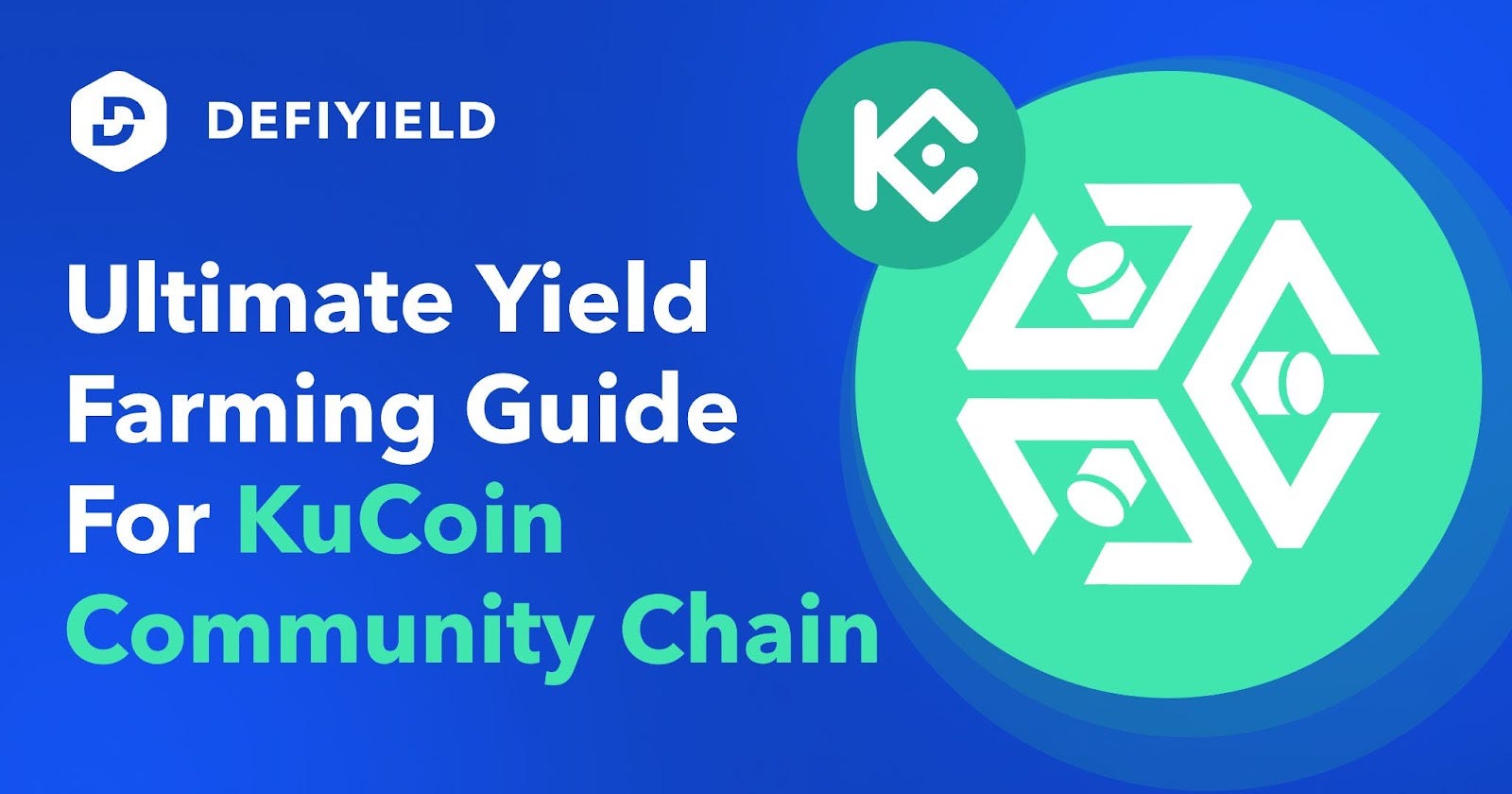
KuCoin is now an established cryptocurrency exchange that many crypto investors will have used or at least heard of. Less well known is the KuCoin Community Chain but, for intrepid yield farming enthusiasts, these sorts of new opportunities are often the most exciting.
KuCoin Community Chain was built by fans of KuCoin as an alternative to poor performance and expensive public chains. It launched its mainnet in 2021 and has been growing its ecosystem of projects, wallets and bridges ever since.
In this guide, you’ll find all you need to know about these areas and more, including the features, benefits and architecture of KuCoin Community Chain, as well as the staking and yield farming opportunities that exist.
KuCoin Community Chain (KCC) claims to be a decentralized public chain with high performance.
KCC was built by fans of KuCoin, a centralized cryptocurrency exchange with a long-term goal of full decentralization, and its token, KCS. It was designed to solve the low performance and high cost issues that the fan community saw in other public chains, so they could access a faster, more convenient and lower-cost alternative.
KCC has the following key features:
The mission of KCC is to accelerate the flow of value around the world without boundaries.
“KCC represents a key step towards decentralization beyond the integration of open-source blockchain communities.” — Johnny Lyu, CEO at KuCoin Global
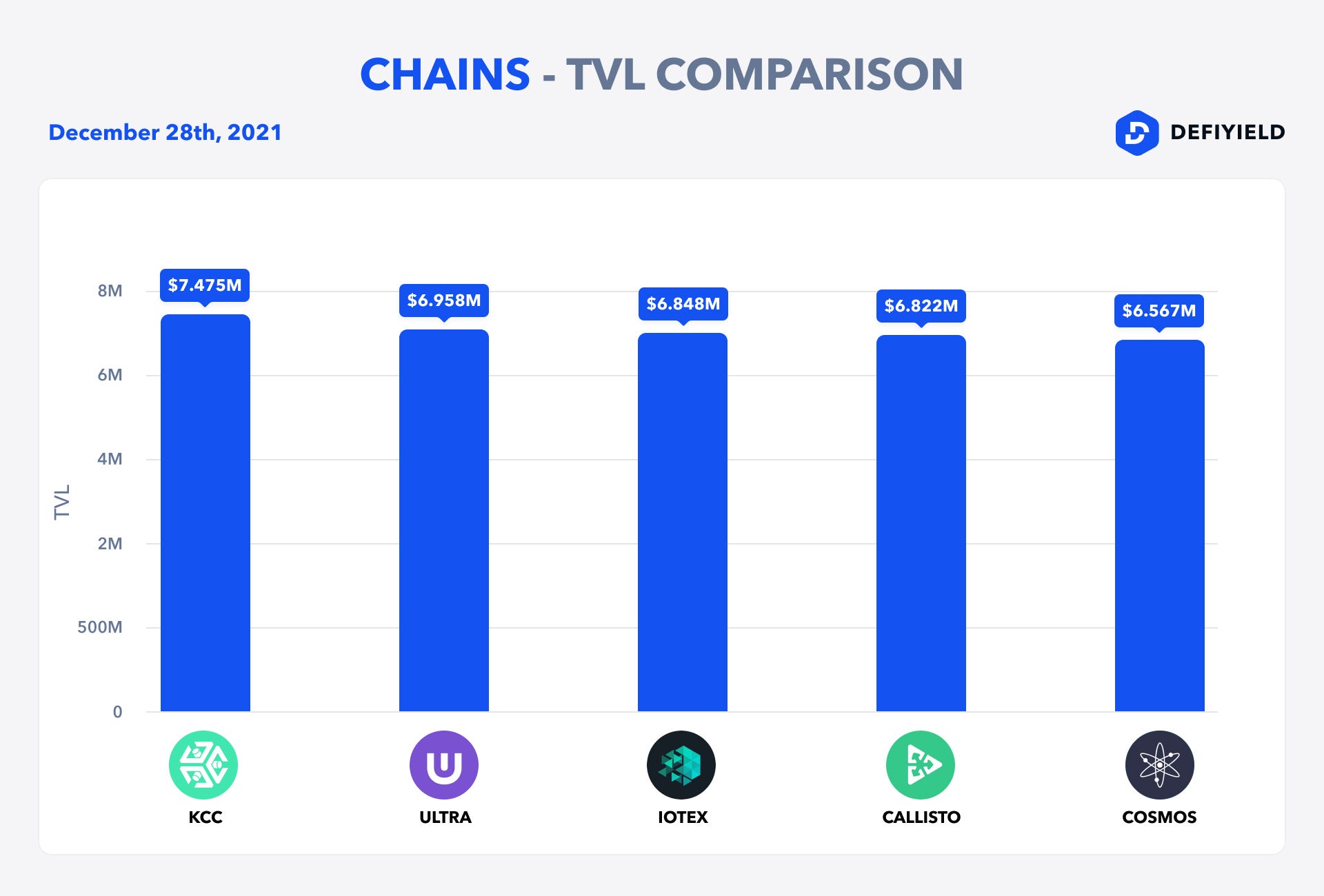
KCC has introduced a PoSA consensus mechanism in order to achieve low transaction costs, low transaction delay and high transaction concurrency.
As the name suggests, PoSA is a combination of Proof-of-Stake (PoS) and Proof-of-Authority (PoA). KCC claims this consensus algorithm is more efficient, secure and robust.
It supports up to 29 validators. To become a validator, you must submit a proposal and wait for other active validators to vote on it. If more than half the active validators have voted, you will be eligible to become a validator. Any address can stake to a validator address and, once the validator’s staking volume ranks in the top 29, it becomes an active validator in the next epoch.
Active validators take turns to mine blocks. If a validator fails to mine a block on time during their round, other active validators who have not been involved in recent blocks will randomly perform the block-out.
Blocks are produced every three seconds in order to accelerate transaction confirmation and increase chain performance.
The KCS token is the native token for KCC. It can be used to pay gas fees.
As of 22 December 2021, KCS has a maximum supply of 166,729,977, a price of $21.49 and a current market cap of $1,662,060,764 (according to CoinGecko data).
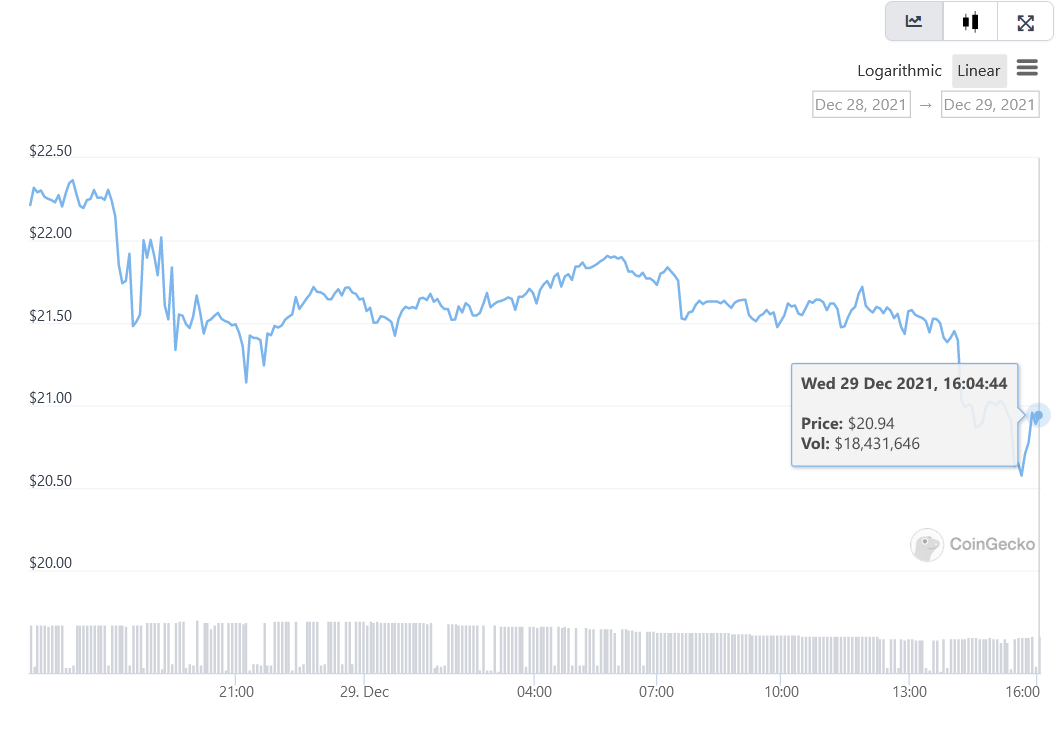
The KuCoin Community Chain ecosystem includes exchanges, wallets, community, NFT and yield generation projects, as well as much more.
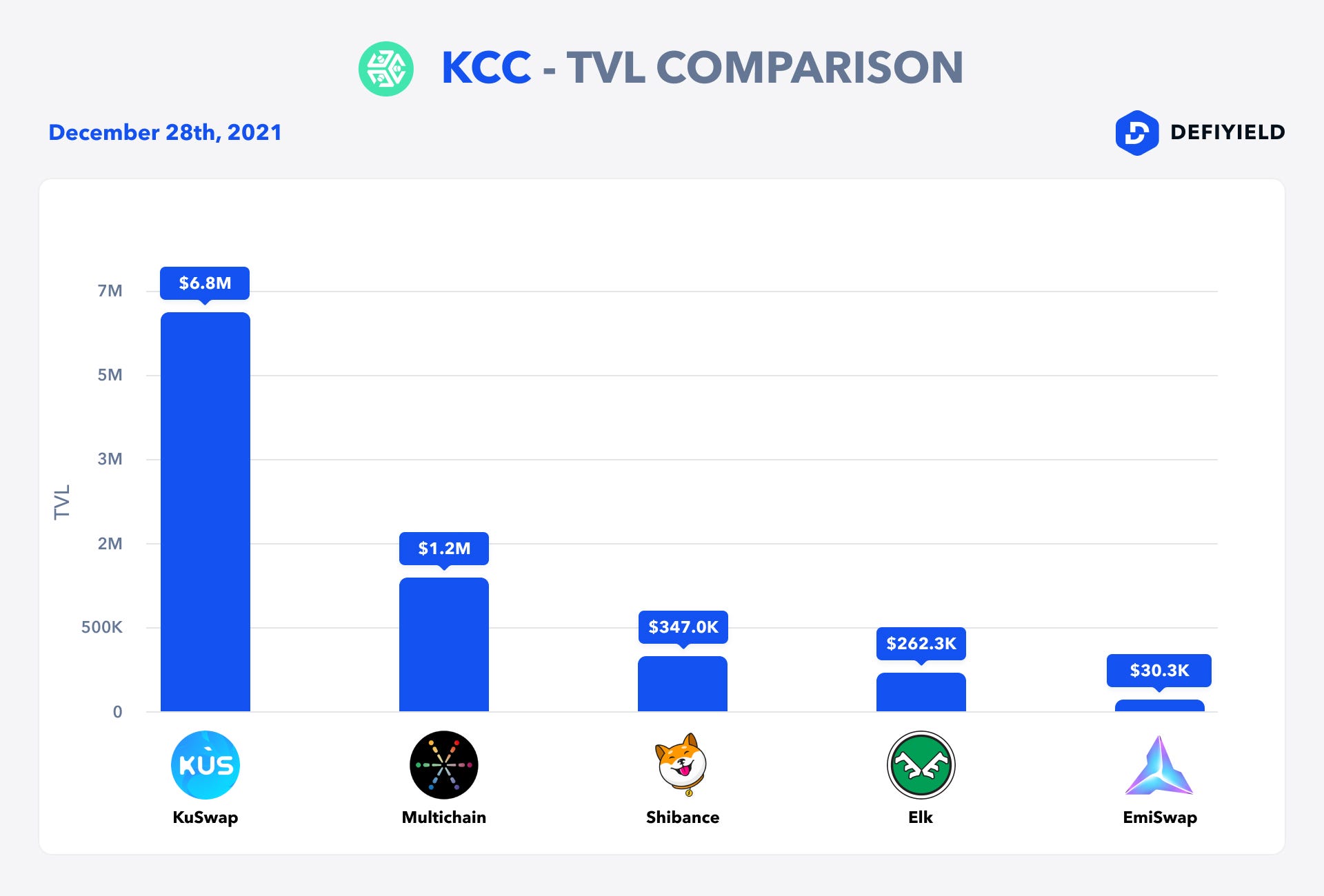
According to the KCC ecosystem dashboard, there is over $47 million of value locked in the ecosystem. The top projects in the ecosystem are MojitoSwap, KuSwap, Alpha DAO, Vixen Punks and KuKitty.
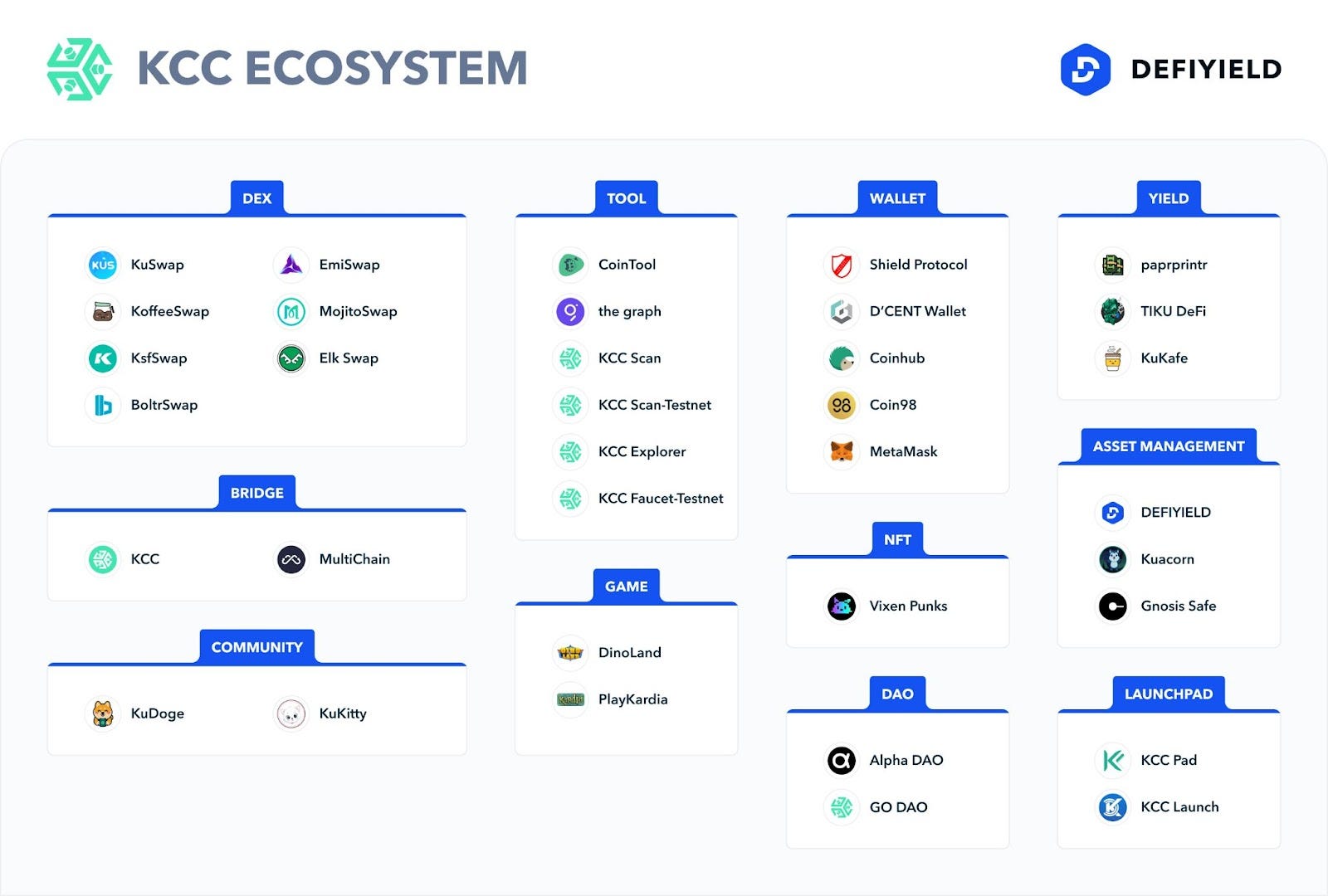
There are a few wallet options available for KCC, including well-known wallets that can be configured for this purpose.
MetaMask is the most popular web and mobile cryptocurrency wallet, originally designed for using the Ethereum blockchain. It can be configured to work with KCC too.
To add Kucoin Community Chain to Metamask, click “Add Network” and insert this details:
Chain Name: KCC-MAINNET
Chain ID: 321
Symbol: KCS
RPC URL: https://rpc-mainnet.kcc.network
Explorer URL: https://explorer.kcc.io/en
MathWallet is a multi-platform crypto wallet with mobile, desktop, hardware and extension functionality, which can be used to send and receive tokens on KCC.
Coin98 is a multichain non-custodial wallet that can be used to manage everything from DeFi to NFTs. It can be used to set up a KCC wallet too.
There are a couple of bridges that already exist for transferring assets from well-known EVM-based blockchains.
The KCC Bridge is the main bridge between KCC and Ethereum, which can be used to transfer a range of popular assets, such as stablecoins, between chains.
KCC Pad is an IDO launchpad for the KCC network that has also developed a bridge to Binance Smart Chain for transferring assets.
De.Fi Announcing the Kucoin Community Chain Integration 🦾🤩
Track your Profit and Loss, balances, prices, and more on KuCoin Community Chain! We enhanced our dashboard to provide the most comprehensive experience.
Simply connect your wallet and see the magic — https://de.fi/🦾

Before doing Yield Farming you will need to bridge your assets.
KCC Bridge gives you some KCS for fees.
After you’ve bridged to KCC, you can choose a farm you want to invest in and get needed tokens.
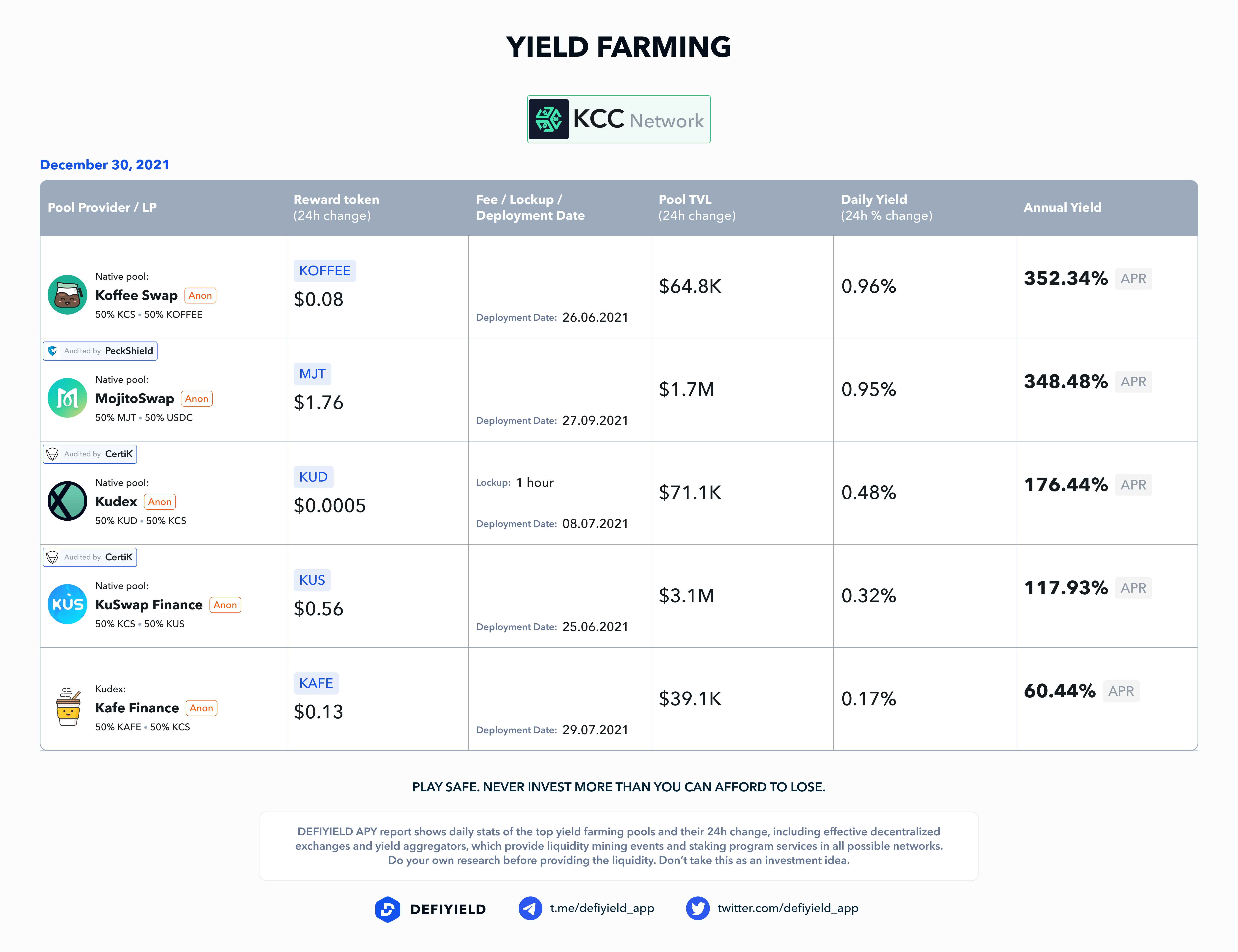
There’re a lot of different YIeld Farming dApps that you can use. Today, we will go with Mojitoswap.
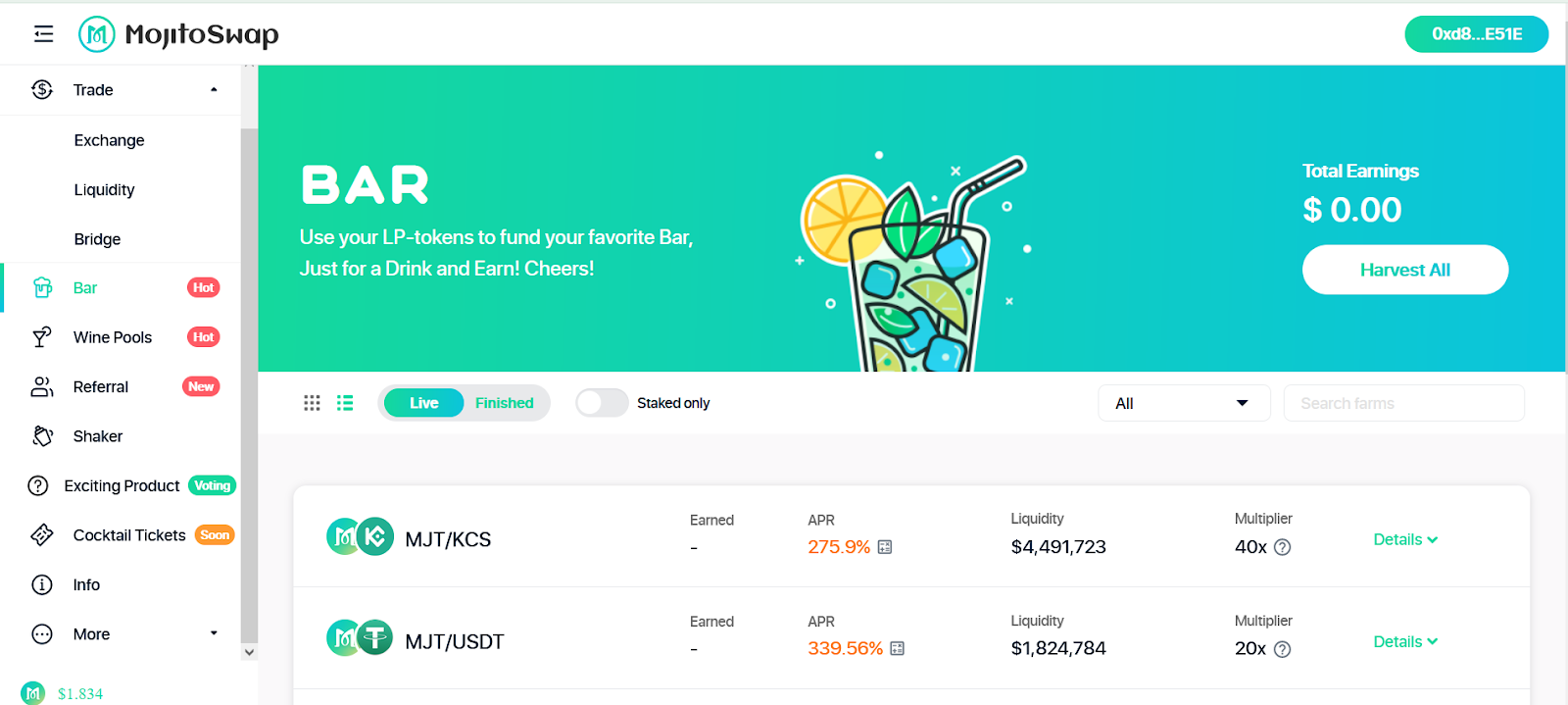
Let’s choose ETH/KCS pool.
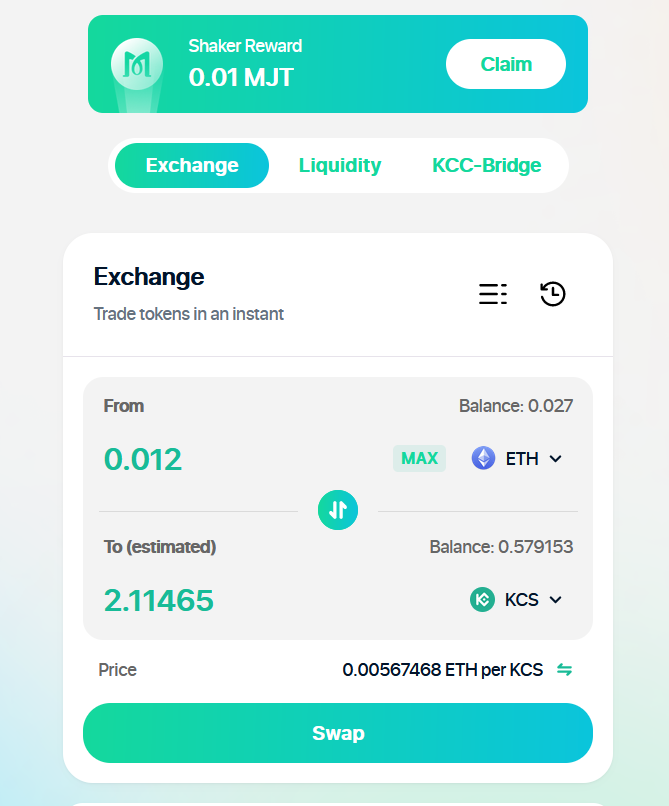
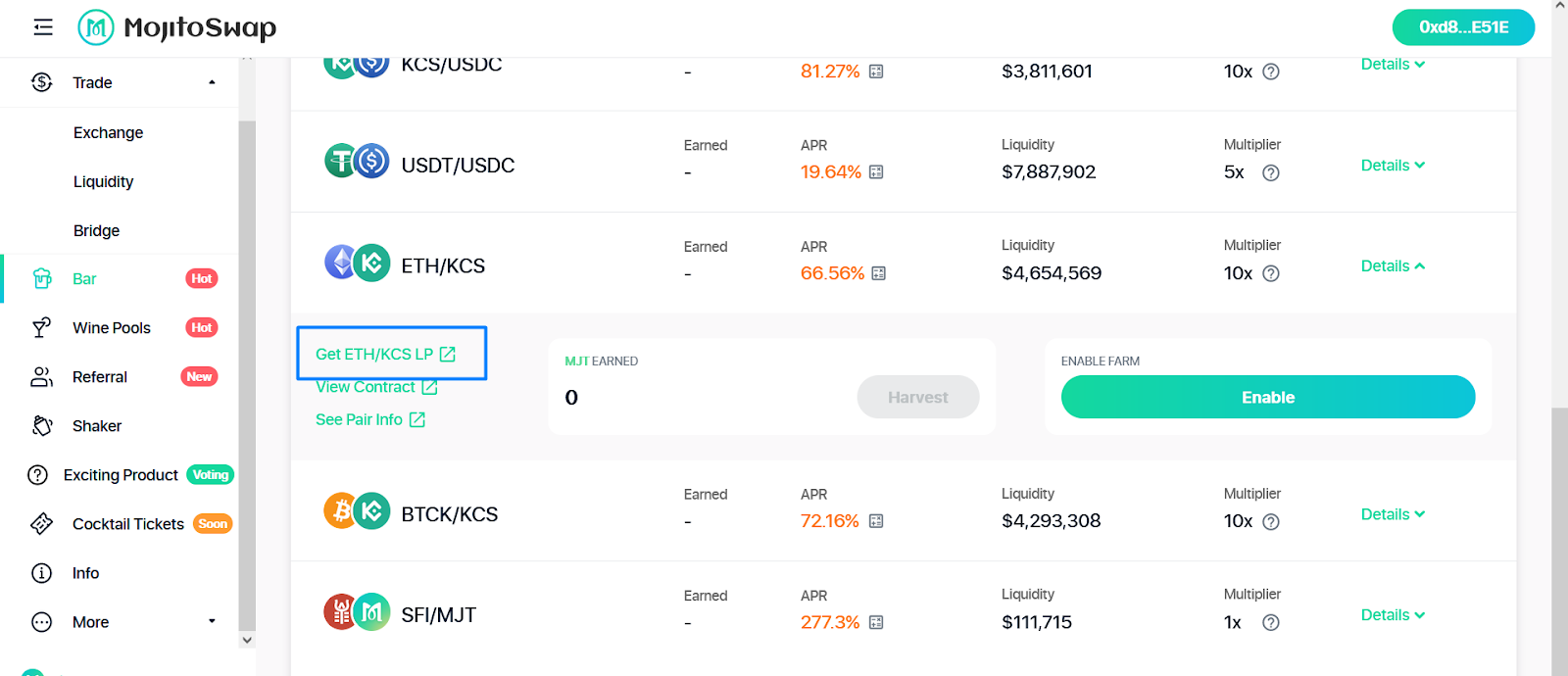
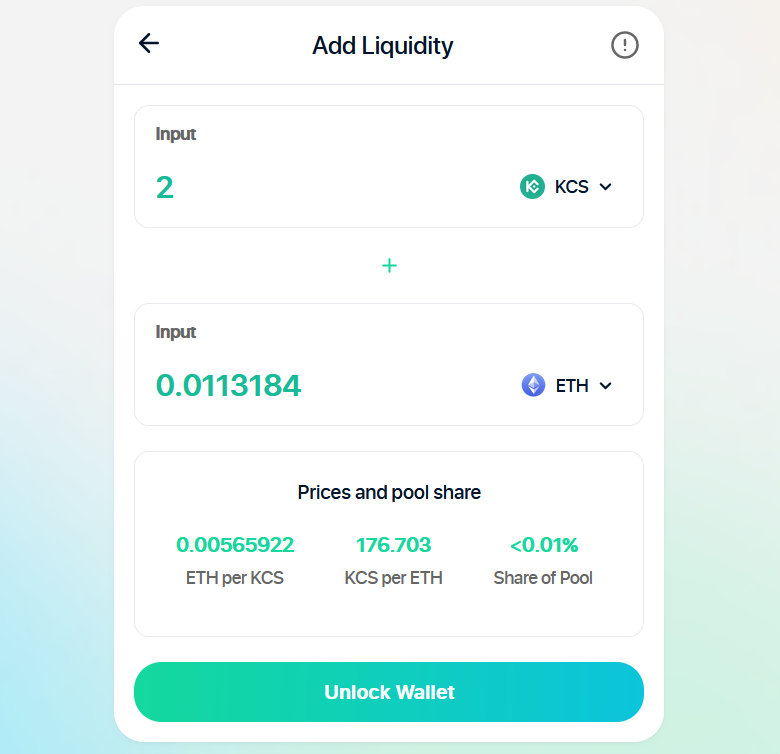
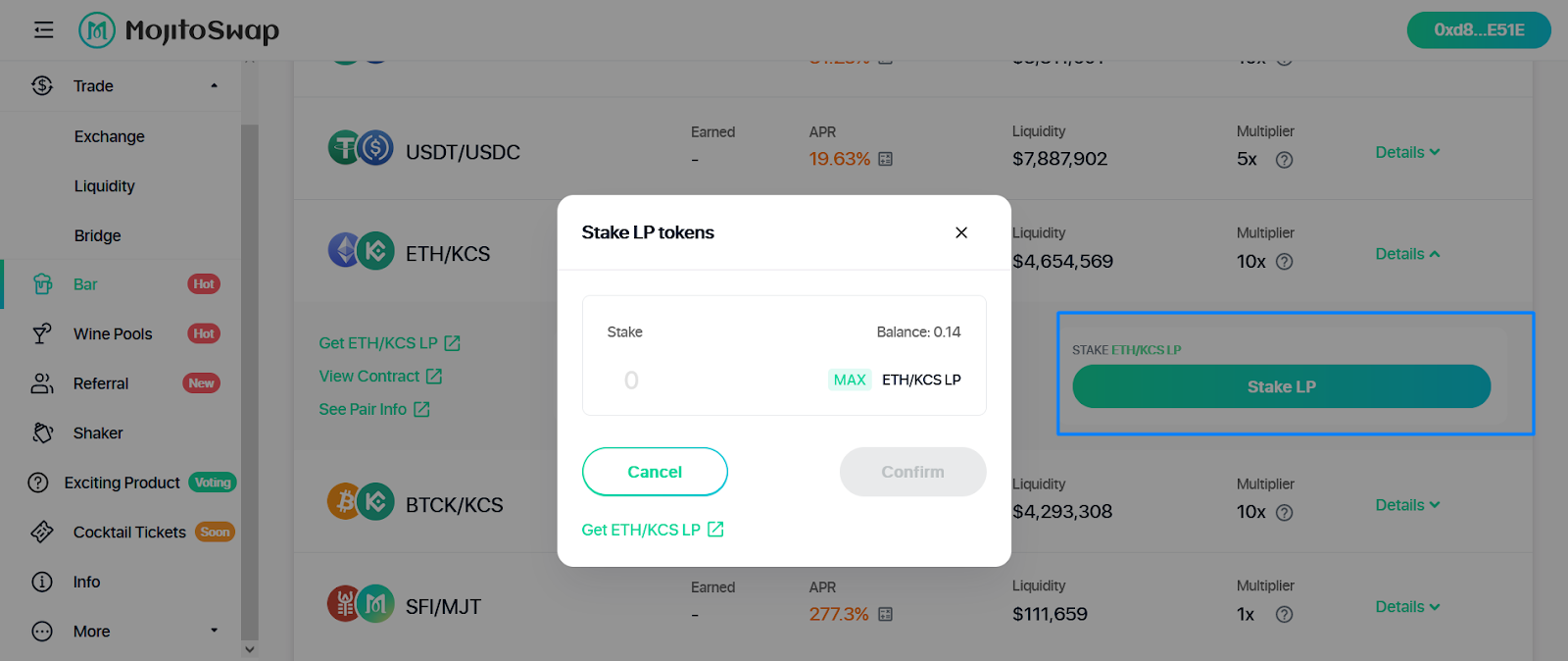
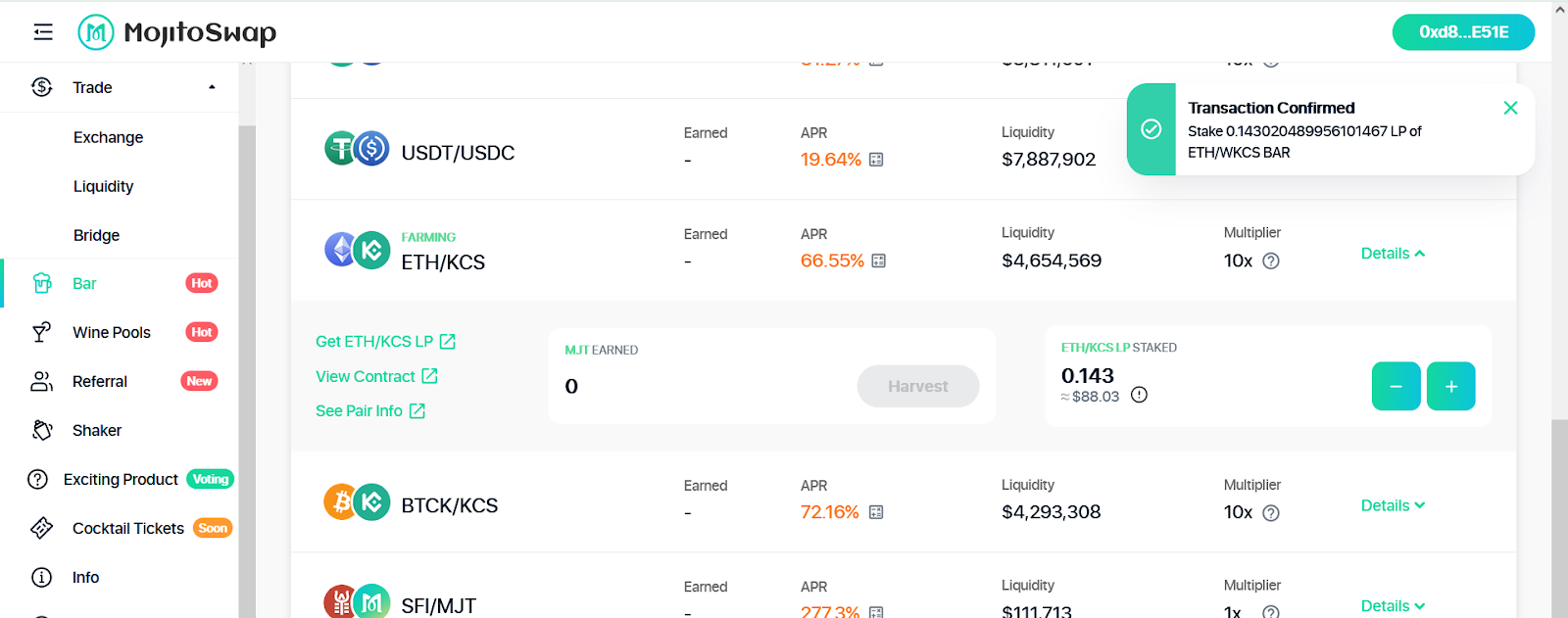
For any KuCoin exchange users and especially for KCS holders, the KuCoin Community Chain certainly looks like an opportunity to investigate.
With its aims to achieve high performance and low transaction costs, anyone holding the KCS token can start to put their digital assets to work within its growing ecosystem. It is also fully compatible with Ethereum and has a growing number of bridges to key EVM-compatible chains, so the range of yield farming opportunities is likely to increase even more over time.
Here you can check yield farming opportunities on KuCoin Community Chain: https://de.fi/explore/network/kcc
However, as always, this is not investment advice and you should always do your own research first.
Tezos Ultimate Yield Farming Guide [Infographics]
Solana Network Ultimate Yield Farming Guide [Infographics]
Fantom Network Ultimate Yield Farming Guide [Infographics]
Huobi ECO Chain Ultimate Guide for Yield Farming
Polygon Network Ultimate Guide for Yield Farming
Binance Chain Ultimate Guide for Yield Farming
EOS Ultimate Yield Farming Guide
Arbitrum Ultimate Guide [Infographics]
The Ultimate Yield Farming Guide For Terra Blockchain (Luna) [Infographics]
The Ultimate Guide to Avalanche Network
Ultimate Guide to Yield Farming on Harmony (with infographics)
Ultimate Guide to Tron Network [Infographics]
The Ultimate Yield Farming Guide For Moonriver Network
The Ultimate Yield Farming Guide For Celo
And join us on twitter and telegram!
Good luck in farming!
October was a month of strong growth and ...
September was a month of global...
August was a month of major...
From major Explore Yields upgrades to...
June was a month of big releases and improvements across...
The end of May brought important updates across...
© De.Fi. All rights reserved.